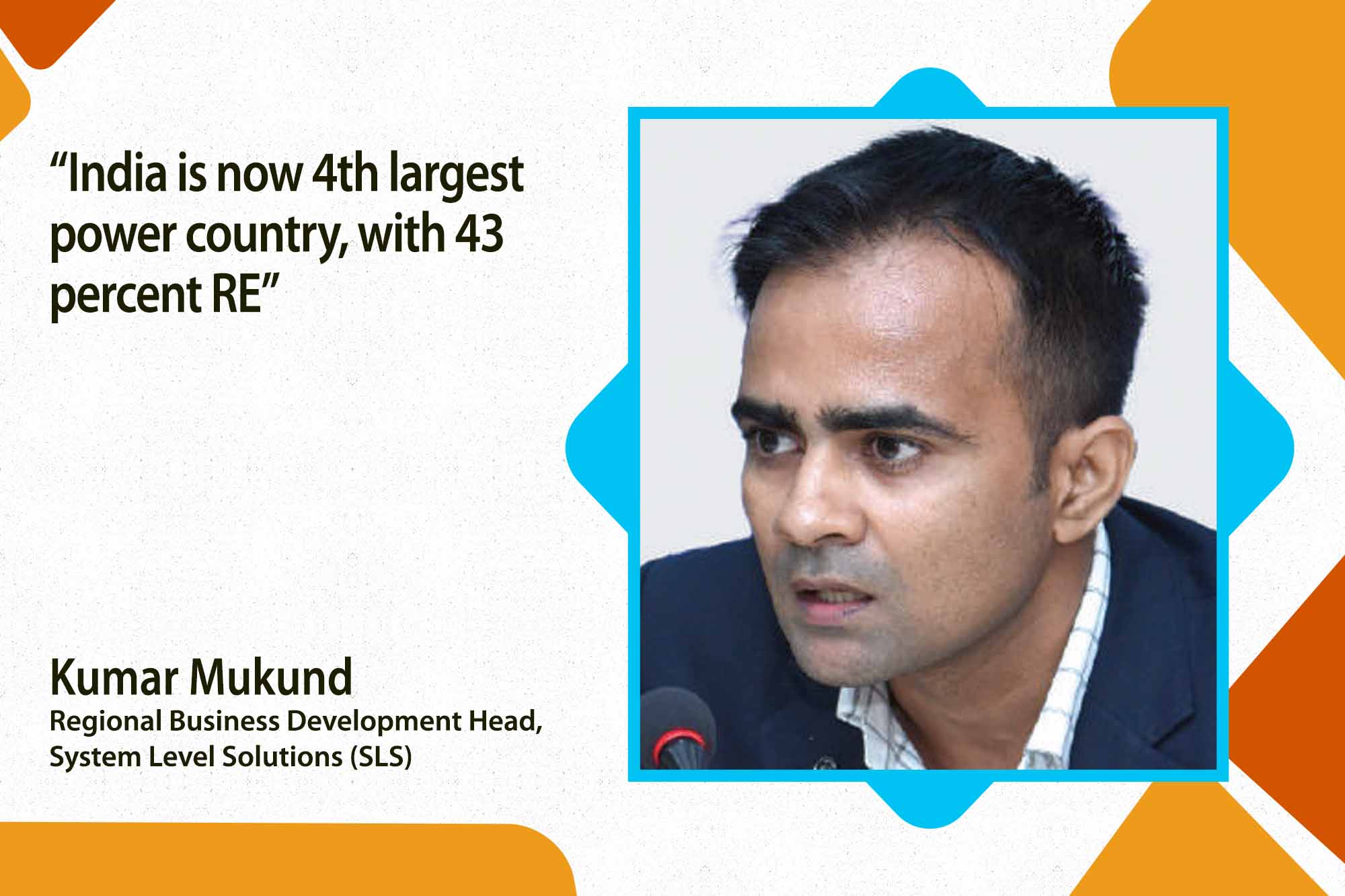Government propelling initiatives to ensure 24×7 renewable power
By EPR Magazine Editorial January 27, 2024 10:59 am IST
By EPR Magazine Editorial January 27, 2024 10:59 am IST

In the dynamic landscape of India’s power sector, transformative initiatives and collaborations have propelled the nation towards sustainability. Kumar Mukund shares his views on the trends with EPR Magazine.
What government initiatives in India are contributing to the transformative shift towards sustainability in the power sector?
India’s power sector has undergone a remarkable transformation in the last 9-10 years with increased focus on providing affordable, reliable and sustainable energy to its people. India become 4th largest country in terms of renewable energy installed capacity, with 43% of its total installed capacity from renewable. India become power surplus region from power deficit region by addition of over 175 GW of generation capacity, mostly renewables. 100 percent village electrification is achieved under DDUGJY and around 2.86 crore houses connected with electricity under SAUBHAGYA. Procurement price of LED bulbs decreased by almost 90% between 2014 and 2019 under UJALA. This initiative brought down electricity bill of households and also increased efficiency. Distribution losses of DISCOMs were reduced from 21.5% to 16.5% under RDSS.
How are smart grids playing a role in enhancing the efficiency and reliability of the power sector in India?
Various smart grid technologies play an important role in enhancing the efficiency and reliability of the power sector in India. A SCADA system provides a real-time monitoring solution which improves overall operational efficiency. Distribution Automation (DA) can give early identification of equipment that may malfunction, thus preventing any unscheduled outages. Similarly, Substation Automation (SA) prevents any unscheduled outages at substation level. GIS helps in easier outage detection and speedier power restoration. AMI helps in the reduction of AT&C losses and DSM. It further helps in peak load management and power quality management. BESS helps in integration of renewable energy to the grid. VGI helps in DSM and peak load management.
Can you elaborate on the public-private collaborations that are strengthening the infrastructure for widespread electrification?
With increasing complexity in the power sector, public private collaboration has become increasingly important. By bringing together private sector’s technology & project management expertise and the public sector’s policy support, public-private collaborations are supporting the development of new technologies and solutions to improve the performance, efficiency, and affordability of electricity. Smart Metering, DSM Technologies and Programs, Smart Grid, Renewable Energy, BESS, EV Charging, VGI etc. are some of the areas where public-private collaboration is working to strengthen T&D infrastructure.
What specific energy storage solutions are being implemented in India to address concerns related to intermittency?Considering the concerns related to intermittent renewable energy, the Ministry of Power (MoP) has introduced “National Framework for Promoting Energy Storage System” in August 2023. Two of its main objectives are to have 24×7 dispatchable RE power; and to improve grid stability and reliability through deployment of ESS that provides grid services such as voltage support, frequency regulation, ramping, and other ancillary support services. The two main storage solutions that are being implemented are PSP and BESS. As per NEP 2023 the energy storage capacity requirement is projected to be 16.13 GW (7.45 GW PSP and 8.68 GW BESS) in the year 2026-27, with a storage capacity of 82.32 GWh (47.6 GWh from PSP and 34.72 GWh from BESS).
How is digitalization optimizing operations in the power sector for energy conservation in India?
Digitalization is the key to improving operational efficiency, integrating renewables, improving the grid reliability, reducing the electricity cost and encouraging energy conservation& improving energy efficiency. With the advancement in various digital technologies like advanced microprocessors, intelligent electronic devices (IED), SCADA, human machine interface (HMI), digital substations, data analytics and artificial intelligence (AI), data capturing and analyzing has become far easier and faster. This helps in better asset optimization and management.
What steps are being taken in the power distribution system to ensure a cleaner, resilient, and inclusive power landscape?
Historically, the artificial distortion of electricity tariff owing to political pressures and operational inefficiency in DISCOMs has time and again led to many bailouts, which in turn has increased the debt to GSDP ratio. Considering these challenges GoI have launched the Reforms-based and Results-linked Revamped Distribution Sector Scheme (RDSS) on 20th July 2021 with the objective of improving the quality and reliability of power supply to consumers through a financially sustainable and operationally efficient distribution Sector. The scheme has an outlay of Rs.3,03,758 crore over a period of five years from FY 2021-22 to FY 2025-26. The Scheme aims to reduce the AT&C losses to pan-India levels of 12-15% and ACS-ARR gap to zero by 2024-25 by improving the operational efficiencies and financial sustainability of all DISCOMs/ Power Departments excluding Private Sector DISCOMs.
Spokesperson: Kumar Mukund, Regional Business Development Head- System Level Solutions (SLS)
We use cookies to personalize your experience. By continuing to visit this website you agree to our Terms & Conditions, Privacy Policy and Cookie Policy.